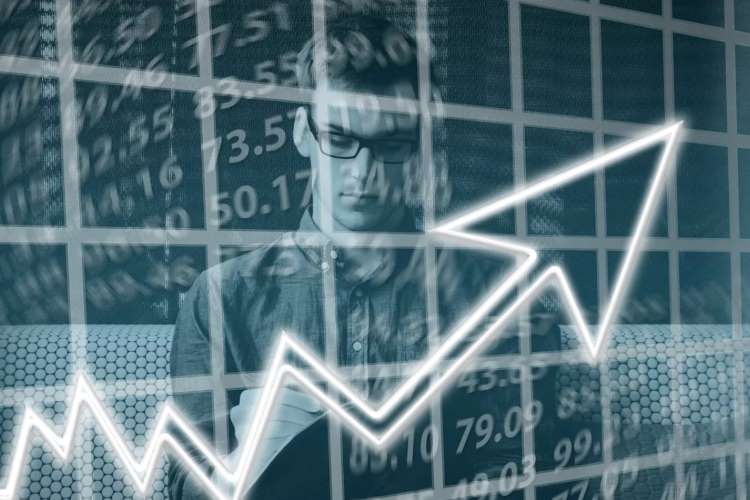
The global economy has slipped into a recession this year after the coronavirus pandemic forced shutdown of economic activity across the world. However, economic growth is expected to pick up next year. It is clear that the economy has been growing slowly this year due to Covid-19 outbreak. The growth projections for India by various forecasters have put GDP growth in the negative zone, but timing can prove them wrong.
The reasons for optimism are many. Agriculture sector has done well – it had a good rabi crop, the monsoon has been good and the kharif crop is also expected to be good. Though there has been a lockdown situation in many sectors, some other sectors such as banking, police, and government have been working. The IT industry and educational institutions have been working online. In industry, automobile firms are recovering, pharma is doing well and so is the medical equipment sector. If the lockdown gets over by August end, then the months of busy season are still available. The country can recover, recoup and bounce back in the next seven months.
READ I Social protection in Tamil Nadu: Covid-19 highlights need for universal coverage
Therefore, the only thing that needs to be done is to create a conducive environment. The fiscal and monetary authorities will have to demonstrate that they are focussed on growth. Therefore, during festival months, things can improve dramatically. The migrant labourers who have gone back to their native places will come back as compensation in agriculture and MGNREGA wages are not sufficient to keep them there. Once the migrant labourers are back, the economy will start galloping.
As for the inflation trend, both WPI and CPI are driven by food inflation. Among food items, potatoes, egg, pulses, meat and fish are witnessing high inflation that could be temporary. The RBI and the government have taken care of liquidity. The biggest concern now is solvency, where there is uncertainty. The RBI has already projected gross NPAs to rise to 14.7% compared with 8.5% last year. The worry is which sector will record NPAs and how will different banks get impacted. The RBI has to prepare for this trend and its impact on the financial sector.
The credit growth has been slower in the current year, around 6% compared with 10-13% earlier. If the interest rates are reduced sharply, credit growth may not take pace. Just imagine a firm in financial stress. When would it prefer to take a loan? Interest rate should be cut sharply so that the industry is not deterred from availing a loan because of high interest cost.
READ I Covid-19: Survey highlights apathy towards farmers’ cause
If the economic growth is not picking up, the repo rate has to reduced. What should be the limit to which it should be cut? The health of the banking industry needs to be examined and it has to be balanced with deposit rate. Repo rate cannot be cut to zero as has been done by advanced countries. The repo rate can be brought down to 3% from the current level of 4% to signal that the policy makers want to create a conducive environment for growth. It can be cut by 50 basis points in August and by 50 bps in October. If it is agreed that there should be a cut of 100 bps, it must be done early so that industry gets a clear message to plan the recovery. The argument that by lowering rate of interest, the senior citizens and the pensioners will suffer is not correct. If we have to subsidise senior citizens and pensioners, it can be achieved by providing them direct relief.
In a situation where so much of money is parked with the RBI, it is obvious that there is scope for extending loans to industry. The credit growth is low and the banks get some easy returns by using the reverse repo window. The reverse repo rate should be reduced significantly so that it is not attractive for banks to park money with the RBI. In a growth-starved, high-unemployment and demographically rich country, inflation-targeting should be given a pause. The message should be very singular that focus is on growth.
Basel norms need to be relaxed. In the post-COVID period, both monetary and fiscal policy will have to be expansionary. Basel norms, generally conservative, could constrain credit expansion. Along with this, India must have a relaxed set of guidelines. Monetary Policy should be ready to accommodate fiscal policy, given that taxes are low and the economy is not growing.
READ I Social protection in Tamil Nadu: Covid-19 highlights need for universal coverage
The NBFC sector is a black box that needs to be examined carefully by the RBI. There are government NBFCs and that is one segment. Then there are 70-80 large NBFCs that have taken huge amount of loans from the banking system that need to be carefully monitored. And then there are a large number of NBFCs that operate extensively at the grassroots level. It will be appropriate to make a distinction between different NBFCs and have different policies for each segment.
The other issue is about the crisis and the timing. A crisis of this magnitude has happened after nearly 100 years and it will be necessary to have a high-level committee to understand what the monetary policy should be in the next few decades. During the Spanish flu pandemic of 1918, the death rate was high, and the economies were badly impacted. But at that time, there were about two dozen central banks, and hardly any regulator or supervisor. There is a need to revisit the monetary policy contours, tools and scope. In 2008, the objective of focussing only on inflation was challenged. In 2019-20, the whole world is locked down and it would be useful for policymakers and academicians to revisit the scope of monetary policy. Maybe it should now be called the financial stability policy and the focus should shift from monetary policy to the larger financial sector.
(Dr Charan Singh is CEO and director of EGROW Foundation, a Noida-based think tank. This article is a reproduction of his views expressed at the shadow Monetary Policy Committee meeting organised by EGROW Foundation. Views are personal))
Dr Charan Sigh is a Delhi-based economist. He is the chief executive of EGROW Foundation, a Noida-based think tank, and former Non Executive Chairman of Punjab & Sind Bank. He has served as RBI Chair professor at the Indian Institute of Management, Bangalore.

